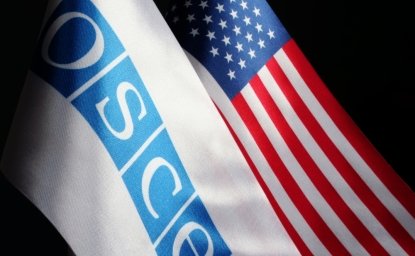Crime and Violence in Central America's Northern Triangle: How U.S. Policy Responses are Helping, Hurting, and Can be Improved (No. 34)


Crime and Violence in Centr... by on Scribd
Photos, left to right: After school program in Honduras, courtesy of Honduran Youth Alliance/Alianza Joven Honduras; U.S. Border Patrol Agent training Guatemalan Police, by Miguel Negronvia defenseimagery.mil (public domain);Mara Salvatrucha graffiti, by Flickr user Walking on Tracks (Creative Commons)
The full report and summary materials are available for download below.The countries of Central America’s Northern Triangle—El Salvador, Guatemala, and Honduras— face challenges ranging from some of the world’s highest homicide rates, rampant extortion, communities controlled by youth gangs, domestic violence, impunity for most crimes, as well as economic despair and lack of opportunity.
The recent wave of migrants driven by these factors has underscored chronic problems in the region that stem back decades. It is often assumed that international drug trafficking explains the surge in violence since 2009, but other important factors are also at play. Drug trafficking is certainly a factor, especially in areas where criminal control of territory and trafficking routes is contested, but drugs do not explain the entirety of the complex phenomenon. Other factors have also contributed.
While there are important differences among the three countries, there are also common factors behind the violence. Strong gang presence in communities often results in competition for territorial and economic control through extortion, kidnapping and the retail sale of illegal drugs. Threats of violence and sexual assault are often tools of neighborhood control, and gang rivalries and revenge killings are commonplace. Elevated rates of domestic abuse, sexual violence, and week family and household structures also contribute as children are forced to fend for themselves and often chose (or are coerced into) the relative “safety” of the gang or criminal group. Likewise, important external factors such a weak capacity among law enforcement institutions, elevated levels of corruption, and penetration of the state by criminal groups means impunity for crime is extraordinarily high (95percent or more), and disincentives to criminal activity are almost non-existent. Public confidence in law enforcement is low and crime often goes unreported.
U.S. policy and practice are also major factors contributing to the violence. U.S. demand for cocaine and other drugs produced in Latin America is among the highest in the world, and U.S. and Mexican efforts to interdict drug trafficking in the Caribbean and Mexico has contributed to the trade’s relocation to Central America. Furthermore, the policy of deporting large numbers of young Central Americans in the 1990s and 2000s, many of them already gang members in the United States, helped transfer the problem of violent street gangs from the United States to Central America’s northern triangle. El Salvador now has the largest number of gang members in Central America followed closely by Honduras and Guatemala. Finally, the trafficking of firearms, especially from the United States, has also contributed to the lethality and morbidity of crime. Efforts to slow firearms trafficking from the United States have encountered many domestic and political barriers and continues largely unchecked.
Over the past year, the Woodrow Wilson Center’s Latin American Program has undertaken an extensive review of the principal United States security assistance program for the region—the Central America Regional Security Initiative (CARSI). This review has focused on the major security challenges in the Northern Triangle countries of El Salvador, Guatemala, and Honduras and how CARSI seeks to address these. This publication includes country reports on each country including a review of the current in-country security context, as well as assessing CARSI’s effectiveness for addressing these challenges. The report also includes a chapter providing an in-depth analysis of the geographic distribution of homicides and an examination of how such an analysis can help policy makers design more effective targeted strategies to lower violence. A final chapter outlining policy options for the future completes the report.
- Crime and Violence in Central America's Northern Triangle: How U.S. Policy Responses are Helping, Hurting, and Can be Improved (No. 34)
- Crime and Violence in Central America's Northern Triangle: How U.S. Policy Responses are Helping, Hurting, and Can be Improved (No. 34)
- Crime and Violence in Central America's Northern Triangle: How U.S. Policy Responses are Helping, Hurting, and Can be Improved (No. 34)
- Crime and Violence in Central America's Northern Triangle: How U.S. Policy Responses are Helping, Hurting, and Can be Improved (No. 34)
Authors

Director of Policy and Strategic Initiatives, Seattle International Foundation

Latin America Program
The Wilson Center’s prestigious Latin America Program provides non-partisan expertise to a broad community of decision makers in the United States and Latin America on critical policy issues facing the Hemisphere. The Program provides insightful and actionable research for policymakers, private sector leaders, journalists, and public intellectuals in the United States and Latin America. To bridge the gap between scholarship and policy action, it fosters new inquiry, sponsors high-level public and private meetings among multiple stakeholders, and explores policy options to improve outcomes for citizens throughout the Americas. Drawing on the Wilson Center’s strength as the nation’s key non-partisan policy forum, the Program serves as a trusted source of analysis and a vital point of contact between the worlds of scholarship and action. Read more

Explore More
Browse Insights & Analysis
The OSCE is a Good Value for America


